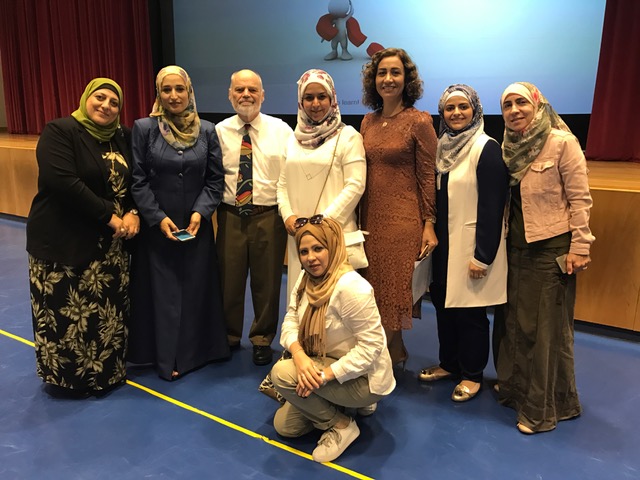Multiple Intelligences Newsletter, Vol 26, No 2
October 1, 2017
Greetings MI Fans,

Written around the time of the American holiday of Halloween, I see a connection between the theory of multiple intelligences (MI) and some of the costumes worn by the kids who troll our neighborhood seeking candy. You see, like many of the undead vampires and villains, similar to the costumed creatures from the crypts, MI won’t die. That’s a powerful statement.
MI was conceived by Dr. Howard Gardner and first presented in his 1983 book, Fames of Mind. At first it was discussed mostly in academia and by psychologists, and then MI exploded in to the K-12 educational world. That’s because teachers and principals intuitively sensed that MI would work for kids! Pat Bolanos and the faculty of the Key School in Indianapolis, IN were the first to see, to pursue, using MI with students. (My former school, the New City School in St. Louis, MO, was the second school.) By the late 1980’s and all through the 1990’s MI was a prominent topic at conferences, in magazines and journals, and, most important, in teachers’ lounges across the country and around the world. I know this from personal experience because there were 400-500 educators visiting the New City School each year to learn about how using MI could help more kids learn and help kids learn more. The New City School hosted four MI conferences and published two books on MI. This enthusiasm made sense because what could be better differentiation than enabling kids to use their intelligence-strengths in learning?
And then, alas, in 2001 No Child Left Behind became the law of the land. To continue my Halloween metaphor, this rigid and narrow focus on test scores – elevating the linguistic and logical-mathematical intelligences to the exclusion of everything else – drove a stake into the heart of MI. The theory still made sense and incorporating MI in curriculum, instruction, and assessment worked for kids and teachers, but in most schools the educators didn’t have the option to use MI; if a practice or strategy didn’t directly focus on raising test scores, it wasn’t supported, often not even allowed. If test scores weren’t satisfactory, jobs were threatened and schools were closed. As a result, most educators pursued – often reluctantly – the drill and kill approach, teaching the same content in the same way, over and over, figuring that with enough repetition, kids will learn it. Of course, they didn’t and joyful learning disappeared from classrooms.
But MI lived on. We still received inquiries about how we used MI at New City School, though many were from other countries. Educator visitors still came, though fewer in number, and our students’ parents continued to value MI because they saw how it benefited their children. Often teachers from other schools would tell me that they were using MI but they didn’t want their principal to know about this. Or sometimes they used MI with tacit approval from their principal but kept it hidden from the central office. And because it worked for kids, MI lived on.
So here we are, 35 years later, and MI is alive and well. It hasn’t regained the foothold that it had in the U.S. in the 1990’s, but I am hopeful that its momentum will return. The recently passed ESSA Act (Every Student Succeeds Act) supports looking at non-academic student growth, and the publicity given to Social Emotional Learning (SEL) indicates that more and more educators are seeing that student potential and growth go far beyond scholastic skills.

This is evident in the positive response to my last book, The Formative Five. In it, I make the case that scholastics are important, but they should be the floor, not the ceiling of our aspirations. I propose that children need to learn the success skills of empathy, self-control, integrity, embracing diversity, and grit. Of course, I am talking about teaching the intrapersonal and interpersonal intelligences.
Recently I presented at the MENA Teacher Summit conference in Dubai, for example (where this photo was taken), and I was gratified to hear so many of these teachers, people from a very different culture than mine, talking about the importance of character, how children need to understand others and know themselves, and that education should be so much more than academics. Yes, they were really talking about MI and the importance of the personal intelligences!
Hats off to Howard Gardner and the intrepid educators who use MI to see students through their strengths. Looking ahead, I am optimistic because as our world becomes smaller, I believe that more educators will recognize the power of MI. It will take more than one stake in the heart to extinguish this idea!
What do you think? I would be delighted to hear from you.
This blog post originally appeared as a newsletter for the ASCD Multiple Intelligences Newsletter.
